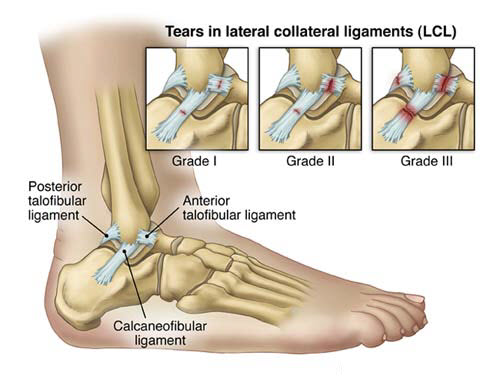The ankle is a complex joint and consists of three different joints called the subtalar joint, the tibiotalar joint, and the distal tibiofibular joint. There are muscles and connective tissue structures that help maintain the stability of the ankle joint. Ligaments are the primary stabilizing connective tissues and connect bone to bone to prevent excessive movement. Sometimes, an injury can cause these ligaments to tear and that is when you have to consider undergoing ankle ligament surgery.
What to Consider Before the Operation
 First, you have to see a pre-admission nurse to confirm you are a good candidate for surgery. Take this opportunity to inform them about any medicines you are taking or any existing medical conditions. Be sure to tell them about any OTC medication as well as any natural remedies or the contraceptive pill you are taking. Tell them if you have hypertension and are taking medication.
First, you have to see a pre-admission nurse to confirm you are a good candidate for surgery. Take this opportunity to inform them about any medicines you are taking or any existing medical conditions. Be sure to tell them about any OTC medication as well as any natural remedies or the contraceptive pill you are taking. Tell them if you have hypertension and are taking medication.
The nurse will check and confirm if you have an unstable ankle that requires surgery. You usually need to go for ankle ligament surgery when nonsurgical treatment does not work. Normally, you need to have nonsurgical treatment for at least six months before you go for surgery.
When You Don’t Need the Surgery
They may not take you as a good candidate for surgery if you have nerve or collagen disease. You may require different surgeries if you have ankle joint arthritis. It is important to stick to nonsurgical treatments to deal with chronic pain. Moreover, you should not be going for surgery for single ankle sprain.
How Is Ankle Ligament Surgery Performed?
When you go for the surgery, your doctor may opt for an anatomical reconstruction or peroneal substitution ligament reconstruction.
- An anatomic reconstruction is a preferred choice and involves repairing the stretched or torn ligaments. Your surgeon may use your own tissue for reconstruction – it is known as Brostrom procedure. Sometimes, they use a cadaver tendon if your own tissue is different or too stretched out. They may also tighten the band of fibrous tissue that keeps the ankle in alignment to prevent re-injury.
- A peroneal substitution ligament reconstruction involves replacing the ligament with another piece of tendon taken from your ankle. The procedure is not as effective as an anatomic reconstruction, which is mainly because the main dynamic stabilizer of the ankle is used here.
Any Risks?
You may experience the same complications that are associated with any type of surgical procedure. These include the risks associated with infection, anesthesia, bleeding, and damage to blood vessels or nerves. The area around your incision may feel numb – this usually happens in 20% of cases and some patients experience complete loss of sensation. Other complications include infection and slow wound healing.
How Long does It Take to Recover from the Surgery?
It usually takes about 6 weeks to recover from your surgery. You can run in a straight line after your ankle is strong enough, but you may have to wait up to 12 months to return to sport-specific exercises.
Your recovery time may change due to many different factors and your unique circumstances. You need to have someone in your home to help you move around after the first few weeks of surgery. A typical recovery schedule may go as follows:
- Ten days: You can have your stitches removed after ten days of your surgery. Your ankle splint will be replaced with a short leg cast. Keep using your crutches.
- Two weeks: You can start driving if you have undergone surgery on the left ankle and have an automatic car. Otherwise, you may have to wait up to a couple of months to be able to drive again.
- Three weeks: Your doctor will remove the cast and you will be able to place more weight on your ankle. You may still have to wear a brace called a cam walker. You can stop using crutches if you can walk comfortably.
- Four weeks: You may be able to return to your work after 4 weeks if your job requires sitting. You will still have to keep your leg elevated. It takes longer to return to work if your job involves long periods of standing.
- Six weeks: You will be able to walk without a cam walker but your doctor may recommend using an ankle brace that you need to place inside your shoes.
- Six months: Your ankle will be recovered from surgery by six months. You will not need a brace after six months.
Tips for Better Recovery
You will have to undergo a physical therapy program after the healing period to strengthen the ankle, maintain your normal gait, regain motion in the ankle, and improve ankle proprioception.
You should avoid bearing weight until your wound has healed completely. It is important to use crutches for the first three weeks or so after your ankle ligament surgery. Take plenty of rest soon after your surgery and keep your leg elevated to help blood flow back from your ankle. Take pain medications if your doctor has prescribed some.
